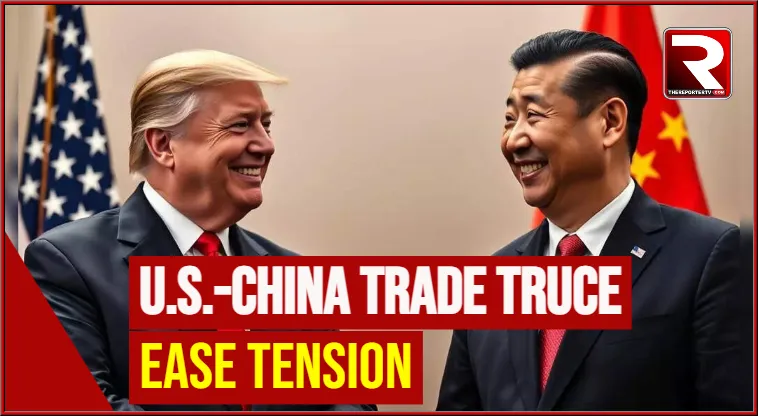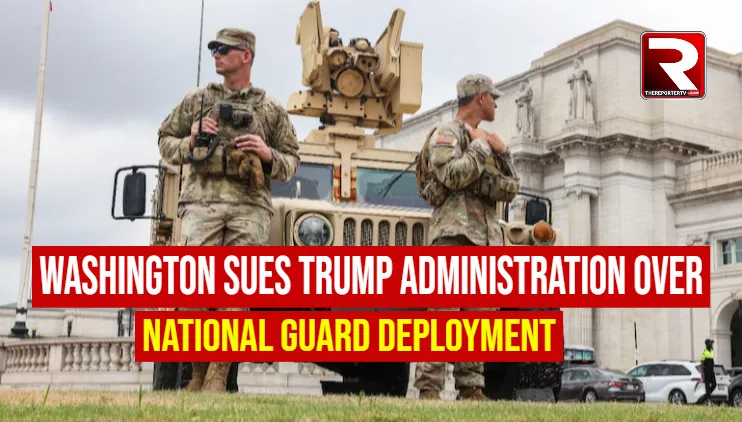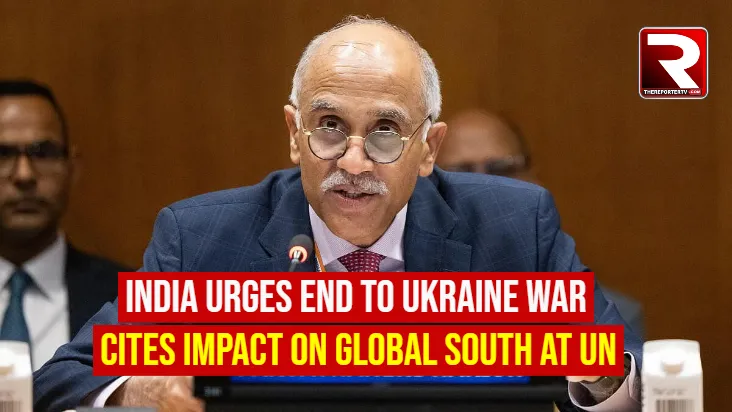Washington, D.C. : President Donald Trump has extended the fragile trade truce with China for another 90 days, pushing back the threat of renewed tariff escalation between the world’s two largest economies.
In a statement posted on his Truth Social platform Monday, Trump said he had signed an executive order extending the current agreement, noting that “all other elements of the Agreement will remain the same.” China confirmed the move through its official Xinhua News Agency, signaling a mutual commitment to avoid another trade flare-up — at least for now.
The truce had been set to expire at 12:01 a.m. Tuesday. Without the extension, U.S. tariffs on Chinese imports could have jumped from an already steep 30%, with Beijing poised to retaliate with fresh levies on American goods. The temporary pause now allows space for continued negotiations and has been welcomed by U.S. businesses with strong ties to the Chinese market.
Sean Stein, president of the U.S.-China Business Council, called the extension “critical,” saying it provides much-needed stability for American firms navigating a volatile international landscape. “This gives both sides the time to pursue an agreement that could boost U.S. market access in China and help restore predictability for long-term planning,” Stein said.
Among U.S. businesses’ top hopes: a deal to stem the flow of fentanyl-related chemicals, in exchange for a reduction in tariffs and rollback of Chinese countermeasures — particularly on agriculture and energy exports.
Trump’s trade battles have radically reshaped the global economic order since he first imposed sweeping tariffs during his previous term. Once known for championing free trade, the U.S. now sports an average tariff rate of 18.6% — the highest since the Great Depression, according to Yale’s Budget Lab. Other partners like the European Union and Japan have already yielded to U.S. pressure, accepting steep tariffs in exchange for preserving access to American markets.
But China has proven a more resilient opponent. In response to U.S. tariffs, Beijing has leveraged its dominance in rare earth elements — critical components in electric vehicles, wind turbines, and fighter jets — threatening to restrict exports to the U.S.
In a key de-escalation move this past June, both sides agreed to dial back restrictions: Washington eased export controls on chip technology and ethane, while Beijing granted U.S. firms greater access to rare earth minerals. “The U.S. has realized it does not have the upper hand,” said Claire Reade, a former assistant U.S. trade representative for China affairs.
Earlier this year, triple-digit tariffs had pushed both economies to the brink. At one point, U.S. tariffs on Chinese goods hit 145%, with China’s retaliation reaching 125%. The resulting economic turmoil sparked a sharp sell-off in financial markets, prompting emergency talks in Geneva. Those meetings led to reduced tariffs — 30% from the U.S. and 10% from China — and opened the door to the ongoing talks that have now been extended.
But experts remain cautious. “The administration’s reliance on high tariffs backfired, and now it’s scrambling for a face-saving path forward,” said Ali Wyne, a U.S.-China analyst at the International Crisis Group. “Beijing knows Washington overplayed its hand.”
Key U.S. concerns — including lax Chinese intellectual property enforcement, massive industrial subsidies, and a $262 billion trade deficit — remain unresolved. While incremental deals are expected, such as soybean purchases or commitments on fentanyl-related chemicals, a comprehensive pact remains elusive.
“The tough issues are here to stay,” said Jeff Moon, a former U.S. diplomat and trade official. “The trade war will continue grinding ahead for years into the future.”
Still, the extension may pave the way for a potential Trump-Xi summit later this year — a high-stakes opportunity to chart a new direction in a relationship that has defined global economic stability for much of the past decade.












